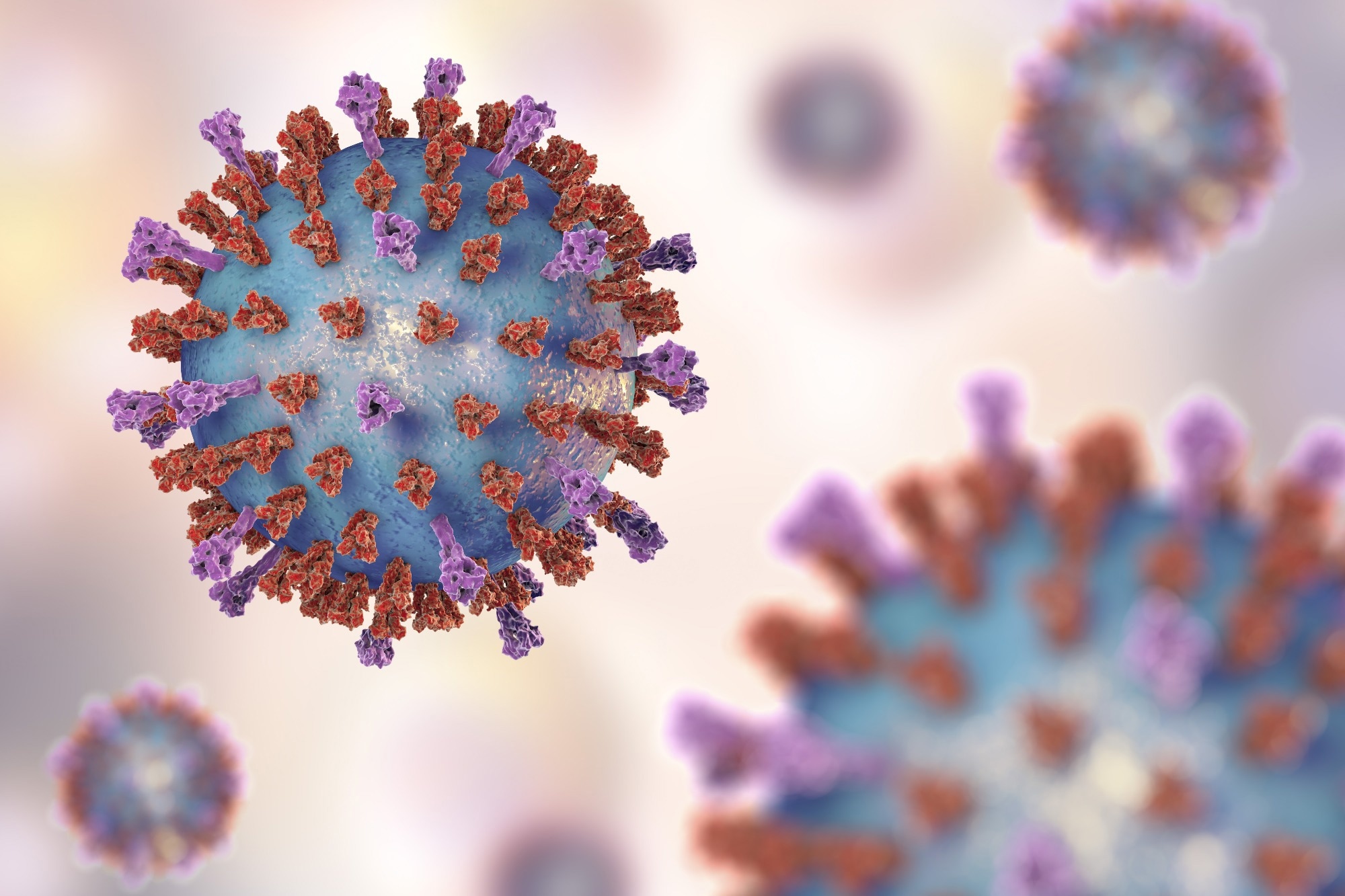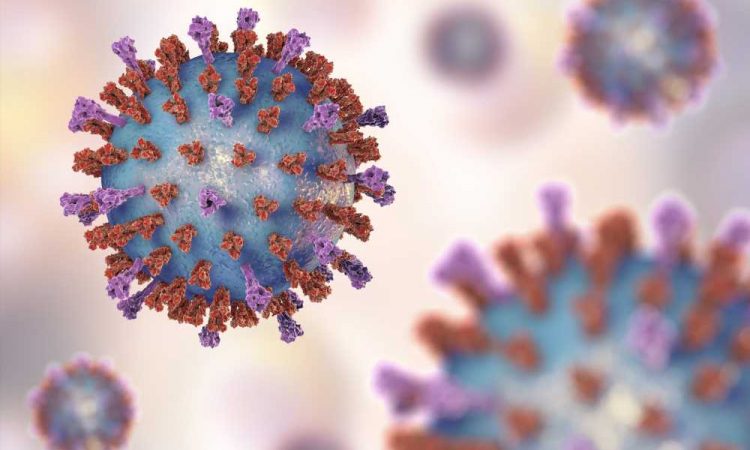In a recent study published in JAMA Network Open, researchers assessed the occurrence of respiratory syncytial virus (RSV) infection before and at the time of the coronavirus disease 2019 (COVID-19) pandemic.

Background
Acute respiratory infection (ARI) caused by RSV is the major causal agent of pediatric bronchiolitis and is correlated with high morbidity and mortality rates among older patients. In comparison to influenza, a considerable proportion of older persons diagnosed with RSV-positive ARI exhibited an inability to perform everyday activities.
RSV-positive ARI can result in significant health risks to older persons and impair their quality of life (QOL) and everyday activities. Importantly, concerning the COVID-19 pandemic, extensive research is required to understand the link between the COVID-19 pandemic and RSV epidemiology.
About the study
In the present study, researchers assessed the incidence of RSV-positive ARI in older individuals before and during the COVID-19 pandemic, as well as the outcomes of RSV-positive ARI.
This study followed the Strengthening the Reporting of Observational Studies in Epidemiology (STROBE) reporting guidelines. The study involved a community-based sample of persons aged 50 years or older who resided in southeast Minnesota between 23 July 2019 and 27 November 2019. The team enrolled 2,326 individuals in the study.
The inclusion criteria required the participants to: (1) reside in southeast Minnesota counties such as Olmsted County and nearby counties, including Dodge, Goodhue, Fillmore, Mower, Winona, and Wabasha, with residency established a minimum of one year before consent was provided; (2) be aged 50 years or above when consent was provided with a maximum of 25% of participants aged between 50 and 59 years; (3) have a primary care physician and a prior record of primary care visits; (4) authorize the utilization of medical reports for research; and (5) write informed consent for study participation.
The team obtained the following clinical information: (1) self-reported QOL and frailty via questionnaires; (2) vital signs, such as blood pressure, respiratory rate, heart rate, and temperature; (3) physical frailty assessments, such as gait velocity, total meters walked, and hand grip strength; and 4) peak flow meter (PFM) or spirometry. At the short-term result assessment, only PFM or spirometry was available. Controls and cases were evaluated at short-term (within four weeks), intermediate-term (six to seven months), and long-term (12 to 13 months) intervals after infection.
Results
The study cohort involved 2325 individuals with a median age of 67 years, including 1380 female and 2240 non-Hispanic White participants. Before the trial, 1225 participants had pneumococcal vaccinations. Chronic diseases were frequent, the median Charlson Comorbidity Index was 1, and there were a total of 1225 participants with chronic diseases.
During the RSV season before the pandemic, 934 participants displayed 1126 ARI episodes, including 970 who were RSV-tested. Almost 58 study participants developed RSV-positive ARI, with 30 and 26 cases caused by RSV type A and RSV type B, respectively. None of the participants were diagnosed with recurrent RSV-positive ARI. The RSV-positive ARI incidence rate was 48.6 per 1000 person-years, while the attack rate was 2.5%. The incidence rate associated with RSV-positive ARI was 50.2 per 1000 person-years when adjusted for age and gender. Additionally, 41 individuals with RSV-positive ARI developed lower respiratory tract disease (LRTD).
During the RSV season at the time of the pandemic, 200 individuals reported 212 ARI episodes, of which 120 tested positive for RSV. On the other hand, the non-RSV season during the pandemic involving 211 participants recorded a total of 219 ARI cases. Furthermore, 140 of the 211 participants were tested for RSV, including seven RSI-positive ARI cases. Five of the RSV-positive ARI patients developed LRTD, and six exhibited severe ARI based on the ARI severity criteria. Also, the incidence rate associated with RSV-positive ARI was 10.2 per 1000 person-years, while the attack rate during the pandemic non-RSV season was 0.42%.
Compared to RSV-negative ARI events, RSV-positive ARI episodes had a higher likelihood of developing into LRTD. Also, there were no changes in healthcare utilization between RSV-negative and RSV-positive ARI patients. Only one RSV-positive ARI patient was admitted to the hospital with a pneumonia diagnosis. The hospitalization rate for RSV-positive ARI was estimated to be 0.83 per 1000 person-years, with an attack rate of 0.04%. Furthermore, none of the RSV-positive ARI patients were hospitalized to the intensive care unit or succumbed to the infection within a month post-RSV-positive ARI events.
Conclusion
The study findings demonstrated that the occurrence of RSV-positive ARI in individuals aged 50 years or older before the COVID-19 pandemic was statistically significant and stable over time. In persons over 50 years of age, RSV-positive ARI was linked with severe long-term effects on health-related QOL beyond the scope of the acute infection. The researchers believe that an effective RSV vaccination could be a crucial strategy for reducing the severity of RSV-positive ARI, particularly in older persons.
- Juhn YJ, Wi C, Takahashi PY, et al. (2023). Incidence of Respiratory Syncytial Virus Infection in Older Adults Before and During the COVID-19 Pandemic. JAMA Network Open. doi: https://www.doi.org/10.1001/jamanetworkopen.2022.50634 https://jamanetwork.com/journals/jamanetworkopen/fullarticle/2800696
Posted in: Medical Science News | Medical Research News | Disease/Infection News
Tags: Blood, Blood Pressure, Bronchiolitis, Chronic, Coronavirus, covid-19, Epidemiology, Healthcare, Heart, Heart Rate, Hospital, Influenza, Intensive Care, Mortality, Pandemic, Pneumonia, Primary Care, Research, Respiratory, Respiratory Syncytial Virus, Spirometry, Virus

Written by
Bhavana Kunkalikar
Bhavana Kunkalikar is a medical writer based in Goa, India. Her academic background is in Pharmaceutical sciences and she holds a Bachelor's degree in Pharmacy. Her educational background allowed her to foster an interest in anatomical and physiological sciences. Her college project work based on ‘The manifestations and causes of sickle cell anemia’ formed the stepping stone to a life-long fascination with human pathophysiology.
Source: Read Full Article
